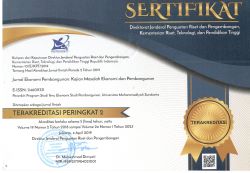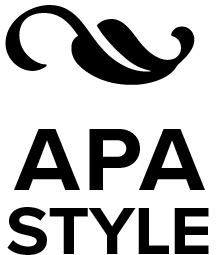Strategies in Developing Agropolitan Areas in Indonesia
Laelatul Farhanah(1*), Sucihatiningsih Dian Wisika Prajanti(2)(1) Faculty of Economics, State University of Semarang
(2) Faculty of Economics, State University of Semarang
(*) Corresponding Author
Abstract
Keywords
Full Text:
PDFReferences
Arsyad, Lincolin. 2015. Economic Development. Yogyakarta: UPP STIM YKPN.
Central Bureau of Statistics. 2014a. Statistics of Kaliwiro Subdistrict of 2014. Wonosobo: BPS.
Central Bureau of Statistics. 2014b. Statistics of Leksono Subdistrict of 2014. Wonosobo: BPS.
Central Bureau of Statistics. 2014c. Statistics of Selomerto Subdistrict of 2014. Wonosobo: BPS.
Central Bureau of Statistics. 2014d. Statistics of Sukoharjo Subdistrict of 2014. Wonosobo: BPS.
Central Bureau of Statistics. 2014e. Wonosobo in Figures. Wonosobo: BPS.
Choliq, A. and I. Ambarsari. 2009. Prospek usahatani tanaman sayuran di kabupaten Brebes. Jurnal Pengkajian dan Pengembangan Teknologi Pertanian, 12, 135-145.
Dalalah, Doraid; Faris AL-Oqla and Mohammed Hayajneh. 2010. Application of the Analytic Hierarchy Process (AHP) in multi criteria analysis of the selection of Cranes. Jordan Journal of Mechanical and Industrial Engineering. Volume 4, Number 5, November 2010.ISSN 1995-6665 Pages 567 – 578.
Oyewo, I.O., M.O. Rauf, F. Ogunwole and S.O. Balogun. 2009. Determinant of mize production among maize farmers in Ogbomoso South Local Government in Oyo State. Agriculture Journal. 4(3), 144-149.
Prajanti, Sucihatingsih DW. 2014. Strategies for controlling agricultural land con version of paddy by using hierarchical process analysis in Central Java. Em erald Group Publishing Limited. Management Journal of Environment Quality Vol. 25, Iss 5 pp. 631-647.
Prajanti, Sucihatiningsih, DW and Waridin. 2010. Model penguatan kapasitas kelembagaan penyuluh pertanian dalam meningkatkan kinerja usahatani melalui transaction cost: Studi empiris di Provinsi Jawa Tengah, Jurnal Ekonomi Pembangunan, 11(1), 13-29.
Puspitasari, L. 2009. Perceptions for farmers to agriculture extension work performance in Soybean Agribusiness Development in Sub district Toroh, Grobogan. Indonesian Scientific Journal Database, 5(1), 44-51.
Regional Development Planning Agency (Bappeda) of Wonosobo District. 2014 Medium term investment plan program on Rojonoto Agropolitan Areas of 2014 2018. Wonosobo: Bappeda Wonosobo.
Regional Development Planning Agency (Bappeda) of Wonosobo. 2015. Farmers’ Exchange Rate in Wonosobo of 2014. Accessed through.
http://bappeda.wonosobokab.go.id/prese ntasi-bps-tentang-ntp-pdrb-ipm/ (September 23, 2015).
Saaty, Thomas L. & Niemira, Michael P. 2006. A framework for making a better decision how to make more effective site selection, store closing and other real estate decisions. Research Review, V. 13, No. 1, 2006.
Salim, R. A. 2006. Measuring Productive Efficiency Incorporating Firm’ Heterogeneity: An Empirical Analysis. Journal of Economic Development, 31 (1).
Ungaran-online.net. Agropolitan City of Semarang district. Accessed through www.semarangkab.go.id/content/view/1 66/81/3/89/167/37/37/82/168/83/Vin.
Compass. on February 6, 2003. (February 22, 2015).
Article Metrics
Abstract view(s): 1804 time(s)PDF: 1302 time(s)
Refbacks
- There are currently no refbacks.
















